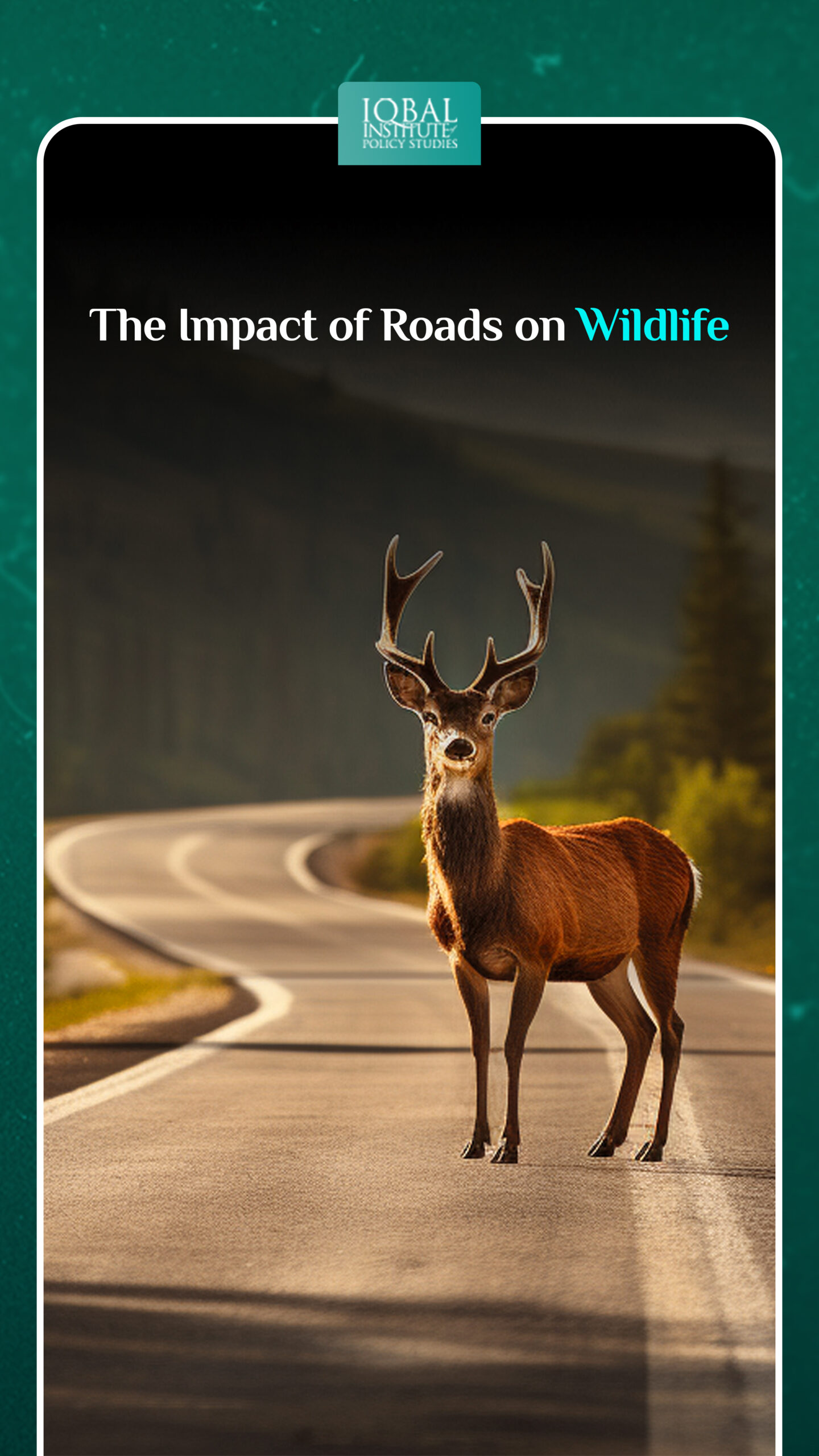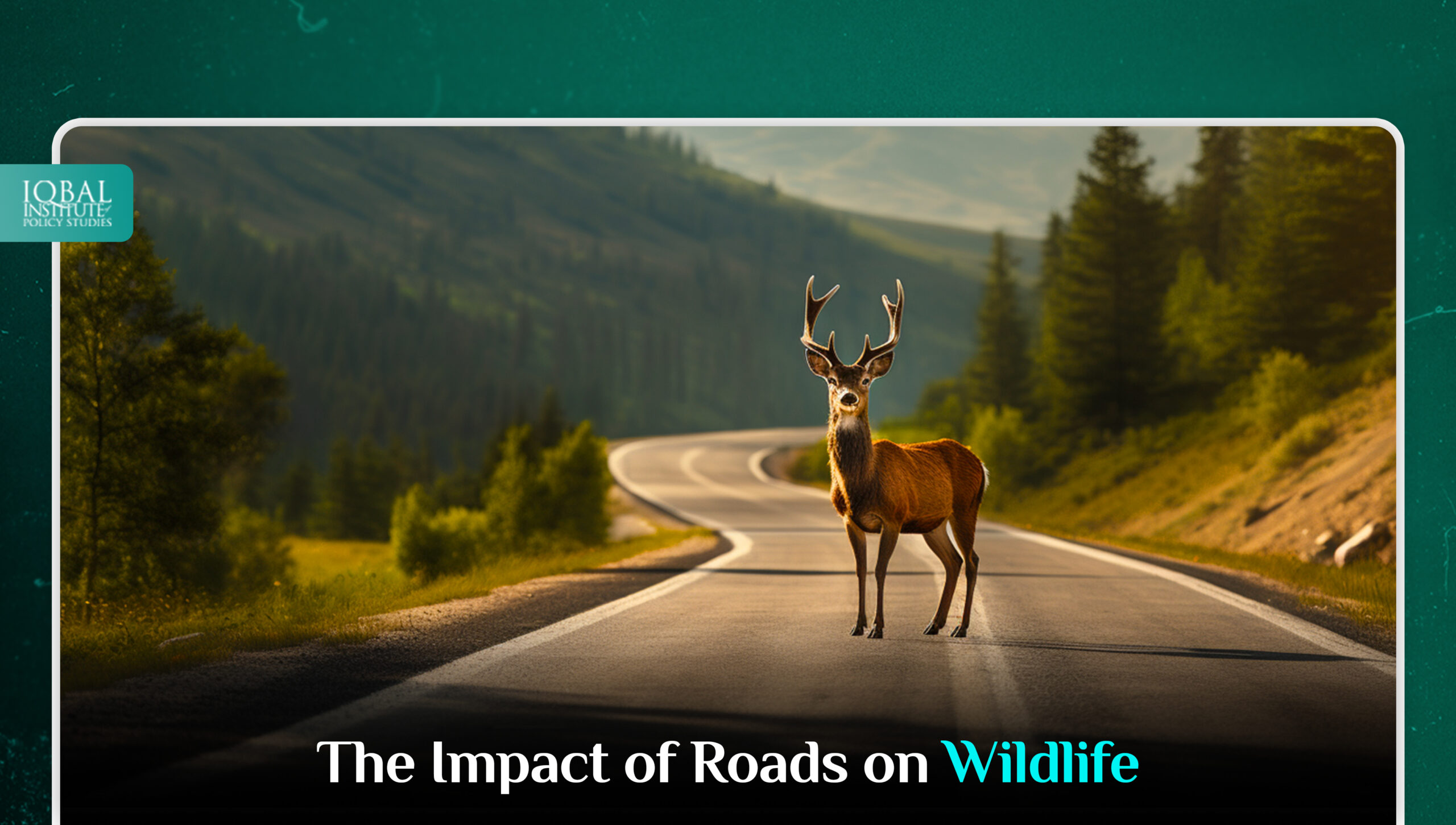Road networks have grown in tandem with human civilisation. While roads are necessary for economic expansion, their intricate network crossing the landscapes leaves a path of ecological disruptions that resonate across wildlife populations. Road building often leads to habitat fragmentation, higher wildlife mortality, altered migration patterns, and disruptions to ecological balance. This fragmentation as a result restricts wildlife mobility and gene flow, resulting in genetic isolation and decreased susceptibility to environmental challenges. Reduced genetic variety might make species more vulnerable to diseases, climate change, and other external stressors, potentially jeopardising ecosystem stability. Nevertheless, the influence of roads on wildlife is a pressing issue for environmentalists, scientists, legislators, and society as a whole, necessitating a careful and balanced strategy that allows for development while protecting biodiversity and the complex interconnection of ecosystems. Therefore, to strike a delicate balance between development and conservation, sustainable road planning, wildlife-friendly design solutions, and community engagement must all be integrated. By encouraging collaboration among governments, conservation organisations, scientists, and local communities, a shared vision can be built for a future where roads and animals coexist peacefully
What is the Impact?
Habitat Fragmentation and Loss
One of the most significant impacts of roads on wildlife is habitat fragmentation and loss. According to recent studies, habitat destruction is the primary hazard to 80 percent or more of the species listed under the federal Endangered Species Act; habitat loss or alteration threatens more than 95 percent of listed species (enotrans, 2014). Roads divide natural landscapes into smaller patches, isolating populations of animals and plants. This division can lead to genetic isolation, reduced access to resources, and hindered movement between habitats. Consequently, it can weaken the genetic diversity within populations, making them more susceptible to diseases and other environmental stresses.
Increased Mortality and Wildlife-Vehicle Collisions
Roads pose a direct threat to wildlife through vehicle collisions. Many species, including mammals, birds, and reptiles, are susceptible to being hit by vehicles while crossing roads. These accidents result in substantial wildlife mortality rates and can be especially detrimental to endangered species with already small populations. Every year, 194 million birds and 29 million mammals are killed on Europe’s roads, while, more than 350 million vertebrate animals are killed by traffic in the United States each year (Schilthuizen, 2022).
Disrupted Migration Patterns
Wildlife often relies on migratory routes to move between seasonal habitats for breeding, foraging, or shelter. Roads can disrupt these critical migration patterns, leading to altered behaviors or even abandonment of traditional routes. Such changes can further exacerbate the problems associated with habitat fragmentation.
Barrier Effect and Population Isolation
Roads can act as barriers to wildlife movement, hindering dispersal and gene flow. This barrier effect can lead to population isolation, potentially increasing the risk of inbreeding and reducing the adaptability of wildlife to changing environmental conditions.
Noise and Light Pollution
Roads bring along noise and light pollution, which can disturb wildlife behavior and communication. Many animals rely on vocalisations, visual cues, and natural light cycles for various activities, such as mating, foraging, and predator avoidance. For instance, birds that migrate or hunt at night use moonlight and stars to navigate. Artificial light might induce them to go off course and into perilous city nightscapes. Every year, millions of birds are killed as they collide with overly lighted buildings and towers (darksky.org, 2023). Noise pollution from roads can interfere with these essential behaviors and disrupt the ecological balance in the surrounding areas. For example, 35.3% of the natural areas in Iran are facing functional habitat loss due to road traffic noise (Madadi, Moradi, & Senn, 2017).
Altered Predator-Prey Dynamics
Roads can impact predator-prey interactions by altering the movement and behavior of both predators and their prey. This disruption can have cascading effects on the entire food chain and ecosystem dynamics.
Climate Change Impact
Road construction contributes to climate change through the release of greenhouse gases during construction and the increased accessibility to remote areas, which can lead to further habitat destruction and environmental degradation. Construction work required to provide road access to 70% of a country’s population might result in cumulative CO2 emissions of around 30 Mt (Wenz, Weddige, Jakob, & Steckel, 2020).
Introduction of Invasive Species
Roads can create pathways for the spread of invasive species, which can outcompete native wildlife and disrupt the balance of ecosystems.
How to Strike Balancing Development and Conservation
While the impact of roads on wildlife is undeniable, it is essential to strike a balance between development and conservation to address the issue effectively. Here are some strategies and approaches that can help mitigate the negative impacts of roads on wildlife:
Wildlife Corridors and Overpasses
Designing and implementing wildlife corridors and overpasses can help reconnect fragmented habitats and allow wildlife to move safely across roads. These specially designed crossings enable animals to avoid traffic and resume their natural movements, reducing the risk of collisions and isolation.
Road Planning and Design
Careful road planning and design can minimise impacts on wildlife. By considering the landscape’s ecological characteristics and the distribution of species, planners can identify areas that should be avoided or prioritised for conservation. Additionally, measures such as wildlife-friendly culverts and fencing can be incorporated to guide animals safely away from roads.
Speed Limits and Warning Signs
Implementing reduced speed limits in areas known for high wildlife activity can help mitigate wildlife-vehicle collisions. Installing warning signs to alert drivers to wildlife crossings can also increase driver awareness and promote cautious driving behavior.
Road Closures or Seasonal Restrictions
In certain areas with particularly sensitive wildlife populations, temporary road closures or seasonal restrictions can be imposed during critical periods, such as breeding or migration seasons.
Public Awareness and Education
Raising public awareness about the impact of roads on wildlife is crucial in garnering support for conservation efforts. Education campaigns can emphasise responsible driving habits, the importance of wildlife conservation, and the role individuals can play in minimising their impact on wildlife.
Conservation Partnerships and Collaboration
Collaboration between government agencies, conservation organisations, scientists, and local communities is essential to devise comprehensive solutions. By working together, stakeholders can pool resources, share knowledge, and implement effective conservation measures.
Conclusion
The impact of roads on wildlife is a complex and multifaceted issue that requires careful consideration and action. As human populations continue to grow, the pressure on natural habitats and wildlife will only increase. Balancing development and conservation is paramount to ensure the survival of diverse ecosystems and their inhabitants. By employing innovative engineering, thoughtful road planning, and fostering a culture of environmental responsibility, governments, and policymakers can create a world where roads and wildlife coexist harmoniously. Preserving biodiversity and the well-being of wildlife should remain at the forefront of our minds as we navigate the road toward sustainable development.
This article is written by Haneen Gul. Haneen is a research analyst at The Iqbal Institute of Policy Studies (IIPS).
References
darksky.org. (2023, July 31). Light pollution harms wildlife and ecosystems. Retrieved from Dark sky: https://darksky.org/resources/what-is-light-pollution/effects/wildlife-ecosystems/#:~:text=Birds%20that%20migrate%20or%20hunt,needlessly%20illuminated%20buildings%20and%20towers.
enotrans. (2014). Transportation and Biodiversity. Retrieved from transact: https://transact.enotrans.org/wp-content/uploads/2014/04/Transportation_and_Biodiversity_Report.pdf
Madadi, H., Moradi, H., & Senn, J. (2017). Degradation of natural habitats by roads: Comparing land-take and noise effect zone. Science Direct, 147-155. doi:https://doi.org/10.1016/j.eiar.2017.05.003
Schilthuizen, M. (2022, April 12). Roadkill Literally ‘Drives’ Some Species to Extinction. Retrieved from Scientific American: https://www.scientificamerican.com/article/roadkill-literally-drives-some-species-to-extinction/
Wenz, L., Weddige, U., Jakob, M., & Steckel, J. C. (2020, July 10). Road to glory or highway to hell? Global road access and climate change mitigation. Retrieved from IOP Science: https://iopscience.iop.org/article/10.1088/1748-9326/ab858d



Leave a Reply